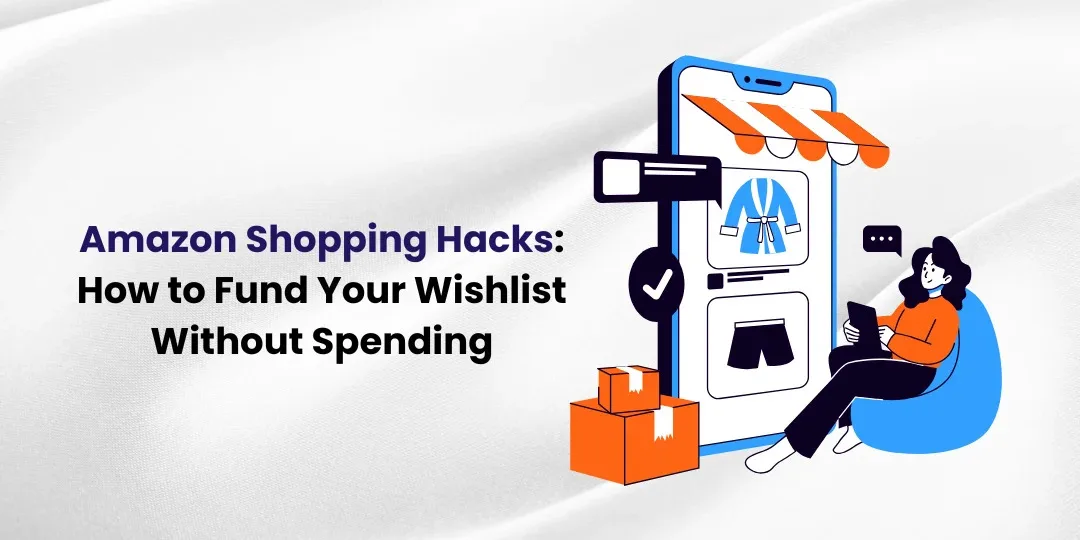Here’s something wild: Amazon ships out 1.6 million packages daily, but thousands of shoppers grab what they want without spending actual cash. No, they’re not stealing. They’ve figured out how to turn spare time into Amazon credits through completely legitimate channels most people ignore.
Think this sounds too good to be true? It’s not. Companies desperately need consumer opinions and they’re throwing money at anyone willing to share them. The trick is knowing where to look and which opportunities actually pay off.
Why Companies Literally Pay You to Exist Online
Every time you scroll social media or watch YouTube, you’re generating valuable data. But here’s the thing: you could be getting paid for similar activities instead. Market research firms distribute roughly $2 billion annually to survey participants, product testers, and opinion sharers.
The average person wastes 147 minutes daily on their phone doing nothing productive. Convert just 30 of those minutes into strategic reward activities and you’re looking at $100-300 monthly in Amazon credits. That’s your Prime membership, holiday shopping, and random midnight purchases covered.
This isn’t some sketchy side hustle either. Fortune 500 companies need real consumer feedback to develop products, test marketing campaigns, and understand buying behaviors. They’d rather pay you $5 for your opinion than waste millions on failed product launches.
Survey Sites That Actually Work (And Ones That Don’t)
Let’s be honest: most survey sites are garbage. They promise easy money but deliver endless screenouts and $0.25 payouts after 45-minute surveys. But legitimate platforms exist, and they pay surprisingly well for minimal effort.
The secret is focusing on specialized platforms that Get Amazon Gift Cards Surveys rather than generic sites promising cash for everything. These focused platforms maintain partnerships with major research firms, which means consistent survey availability and $3-15 payouts per completion. Compare that to random survey mills paying pennies.
Smart survey takers know the game. Complete your profiles honestly (lying gets you banned anyway). Jump on high-paying surveys immediately since spots fill fast. And here’s a pro tip: business and technology professionals often qualify for $50-100 focus groups that take an hour over Zoom.
Amazon’s Hidden Money-Making Programs
Amazon runs several programs that basically throw credits at you, yet hardly anyone uses them. The Trade-In program accepts ancient Kindles, outdated textbooks, and that pile of DVDs collecting dust. Sure, they won’t make you rich, but turning junk into $50-100 in credits beats letting it rot in your closet.
Then there’s Mechanical Turk, Amazon’s micropayment platform where you complete simple tasks for money. Yeah, some tasks pay garbage rates, but experienced workers cherry-pick the good stuff. Data from Oxford University research shows skilled MTurk workers average $11-16 hourly by avoiding penny tasks and focusing on batch work.
Amazon Vine might be the ultimate hack if you can get in. Selected reviewers receive free products (sometimes worth hundreds) in exchange for honest reviews. Building a solid review history with helpful, detailed feedback increases your chances of getting that coveted invitation.
Credit Card Churning for Beginners
Credit card rewards are basically free money if you’re disciplined about paying balances. A card offering 5% back on Amazon purchases instantly saves you money on every order. Stack that with quarterly rotating categories hitting 5% on groceries or gas, then convert those points to Amazon credits.
Signup bonuses are where things get interesting. New cards often offer $500-1000 in rewards after spending $3000 in three months. That’s just your normal expenses redirected through a new card. Some people cycle through 3-4 cards yearly, banking thousands in rewards without paying a cent in interest.
But here’s what nobody talks about: buying discounted gift cards with cashback cards. Purchase Amazon gift cards at grocery stores during 5% cashback periods. You’re essentially getting Amazon credits at a permanent discount. Harvard Business Review analysis found strategic shoppers save 22% on average through stacked discounts.
Passive Income Apps That Don’t Suck
Install Honey, Rakuten, and Capital One Shopping browser extensions. Seriously, that’s it. These apps automatically apply coupons and earn cashback without you lifting a finger. Rakuten alone pays out quarterly in Amazon gift cards, and most users earn $100-400 yearly just shopping normally.
Receipt scanning takes five seconds but pays surprisingly well. Apps like Fetch and Ibotta give points for uploading grocery receipts. A typical family earns $30-50 monthly just photographing receipts they’d throw away anyway. Some apps even pay bonuses for specific brands or consecutive scanning streaks.
Don’t sleep on Microsoft Rewards either. Use Bing instead of Google (it’s honestly not that bad), complete daily quizzes taking 30 seconds, and rack up points redeemable for Amazon credits. Power users generate $10-20 monthly with five minutes of daily effort.
Flipping and Arbitrage Opportunities
Retail arbitrage sounds fancy but it’s just buying low and selling high. Hit clearance racks after holidays, scan barcodes with Amazon’s seller app, and identify products selling for 3x retail price online. One person’s clearance Christmas decoration becomes another’s must-have item in October.
Book flipping remains stupidly profitable. Thrift stores price most books at $1-2, while specific titles fetch $15-30 on Amazon. Focus on textbooks, specialty cookbooks, and niche hobby guides. One Saturday morning at garage sales can net $200-500 in profit after fees.
Gift card exchanges let you convert unwanted cards into Amazon credits at 85-92% value. Got a bunch of restaurant cards from your birthday? Trade them for Amazon credits and buy what you actually want. Sites like CardCash and Raise handle transactions securely, protecting both buyers and sellers.
Common Mistakes That Kill Your Earnings
People join 47 different reward sites thinking more equals better. Wrong. You’ll burn out checking emails, forget login credentials, and miss minimum payout thresholds. Pick 3-5 solid platforms and work them consistently. Quality beats quantity every time.
Never pay to join reward programs. Legitimate platforms make money from market research companies, not users. If someone wants $39.99 for their “exclusive survey list,” run away. The same goes for any program promising $500 weekly for watching videos; if it sounds unrealistic, it probably is.
Privacy matters more than most people realize. Create a dedicated email for reward programs to avoid spam in your main inbox. Use Google Voice numbers for verifications. And actually read privacy policies (boring but important) before sharing personal information with random companies.
Making This Actually Work Long-Term
Success requires treating this like a system, not random clicking when you’re bored. Set up a simple spreadsheet tracking which programs you’re using, average earnings, and payout schedules. Spend 30-45 minutes daily on high-value activities instead of three hours chasing pennies.
Schedule specific times for reward activities. Maybe it’s during your morning coffee, lunch break, or while watching Netflix. Consistency beats intensity; earning $5 daily adds up to $150 monthly, or $1,800 yearly in Amazon credits.
The Mashable reports that combining multiple strategies can reduce Amazon spending by 67% for disciplined practitioners. Stack survey earnings, cashback rewards, and strategic purchasing, and you’re basically shopping for free.
The Real Psychology Behind “Free” Shopping
Getting stuff without spending triggers a different psychological response than buying on sale. There’s something deeply satisfying about redeeming earned credits that regular purchases can’t match. It feels like beating the system, even though you’re playing completely by the rules.
But don’t let free credits justify buying useless crap. That defeats the whole purpose. Create a prioritized wishlist: necessities first, practical wants second, fun splurges last. When credits roll in, work down the list systematically instead of impulse buying whatever catches your eye.
Some people even use this as a forced savings mechanism. They fund all gift purchases through earned credits, keeping their actual budget intact. Others dedicate earnings to specific goals like building emergency supplies or funding hobbies without guilt.
Final Thoughts
Funding your Amazon wishlist without traditional spending isn’t magic or a scam. It’s about redirecting time you’re already wasting into activities that generate value. Whether that’s sharing opinions through surveys, maximizing credit card rewards, or flipping thrift store finds, opportunities exist for everyone.
You don’t need special skills or huge time commitments. Just consistency, basic organization, and willingness to try something different. Start with one or two methods, get comfortable, then expand. Within a few months, you’ll wonder why you ever paid full price for anything on Amazon.





